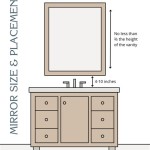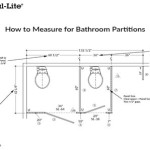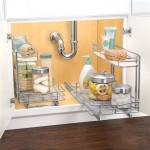Tiny Bathroom Sinks With Vanity: Maximizing Space and Style
Limited space often presents a challenge in bathroom design, requiring careful consideration of every element. Among these, the sink and vanity unit are critical components that significantly impact both functionality and aesthetics. In small bathrooms, the selection of a tiny bathroom sink with vanity becomes paramount. These compact units offer a practical solution without compromising on style or storage capabilities. This article will explore the various aspects of choosing and implementing tiny bathroom sinks with vanities, focusing on design considerations, material options, installation tips, and space-saving strategies.
Understanding the Dimensions and Constraints
Before embarking on the selection process, a thorough assessment of the available space is crucial. Precise measurements of the bathroom's footprint, particularly the area designated for the sink and vanity, are essential. This includes not only the width and depth but also the height and any potential obstructions such as plumbing fixtures or door swings. Standard bathroom dimensions often vary, but in many small bathrooms, the space allocated for the sink and vanity might be as little as 18 to 24 inches in width. Consequently, the choice of a tiny bathroom sink with vanity must be carefully tailored to fit within these constraints.
When considering dimensions, it's also important to acknowledge the impact on usability. A sink that is too small can be impractical for everyday tasks such as washing hands or brushing teeth, leading to water splashing and inconvenience. Balancing the need for space efficiency with functional requirements is a key aspect of the selection process. Many manufacturers offer compact vanities with sinks designed to maximize the usable basin area while maintaining a small overall footprint.
Furthermore, the placement of plumbing connections plays a vital role in determining the type of vanity that can be installed. Existing plumbing locations may necessitate choosing a vanity with specific dimensions or configurations to avoid costly and time-consuming plumbing alterations. Therefore, an understanding of the existing plumbing infrastructure is a prerequisite for selecting the right tiny bathroom sink with vanity.
Exploring Design Options and Styles
Tiny bathroom sinks with vanities are available in a wide range of designs and styles, catering to diverse aesthetic preferences and bathroom layouts. Wall-mounted vanities, corner vanities, and freestanding vanities are among the most common options, each offering unique advantages in terms of space utilization and visual appeal.
Wall-mounted vanities, also known as floating vanities, are particularly well-suited for small bathrooms. By suspending the vanity off the floor, they create an illusion of spaciousness and make cleaning easier. The open space underneath the vanity also allows for the storage of small items or the placement of decorative baskets. Wall-mounted vanities are available in various widths and depths, allowing for customization to fit specific space requirements. However, installation requires careful consideration of wall support and plumbing connections.
Corner vanities, as the name suggests, are designed to fit snugly into the corner of a bathroom. This configuration is ideal for maximizing the use of otherwise underutilized space. Corner vanities often feature a triangular or curved shape and can be paired with a matching corner sink. These units are particularly effective in bathrooms with unconventional layouts or limited wall space.
Freestanding vanities offer a more traditional look and are available in a variety of styles, from classic to contemporary. While they may occupy more floor space than wall-mounted or corner vanities, they often provide ample storage in the form of drawers and cabinets. Freestanding vanities can be a good option for those who prioritize storage capacity over maximizing floor space.
The style of the vanity should complement the overall design of the bathroom. Modern bathrooms often feature sleek, minimalist vanities with clean lines and neutral colors. Traditional bathrooms may benefit from vanities with ornate details and classic finishes, such as wood or marble. The choice of hardware, such as knobs and pulls, can also contribute to the overall aesthetic.
Material Considerations and Durability
The materials used in the construction of a tiny bathroom sink with vanity play a significant role in its durability, aesthetics, and maintenance requirements. Common materials include wood, MDF (medium-density fiberboard), particleboard, ceramic, porcelain, stone, and stainless steel. Each material offers different advantages and disadvantages in terms of cost, durability, and appearance.
Solid wood vanities are known for their durability and natural beauty. They can withstand moisture and wear and tear, but they tend to be more expensive than other options. Wood species such as oak, maple, and cherry are commonly used in vanity construction, each offering a unique grain pattern and color tone. It's crucial to ensure that the wood is properly sealed and finished to protect it from water damage.
MDF and particleboard are engineered wood products that are often used as more affordable alternatives to solid wood. These materials are resistant to warping and cracking, but they are more susceptible to water damage. MDF is generally considered to be a higher-quality material than particleboard due to its denser construction. Vanities made from MDF or particleboard are typically finished with a laminate or veneer to protect them from moisture.
Ceramic and porcelain sinks are highly durable and resistant to stains and scratches. They are also relatively easy to clean and maintain. Ceramic sinks are typically less expensive than porcelain sinks, but they may be more prone to chipping. Porcelain sinks are fired at higher temperatures, resulting in a denser and more durable material.
Stone sinks, such as granite or marble, offer a luxurious and elegant look. They are highly durable and resistant to heat and scratches, but they can be porous and require sealing to prevent staining. Stone sinks tend to be more expensive than ceramic or porcelain sinks.
Stainless steel sinks are a popular choice for modern bathrooms due to their sleek appearance and durability. They are resistant to rust and corrosion and are easy to clean. However, stainless steel sinks can be prone to water spots and scratches.
The choice of material should be based on a balance of factors, including budget, aesthetic preferences, durability requirements, and maintenance considerations. It is generally advisable to invest in high-quality materials that will withstand the rigors of daily use and maintain their appearance over time.
Optimizing Storage in a Tiny Bathroom
In a small bathroom, storage space is at a premium. Therefore, the choice of a tiny bathroom sink with vanity must take into account its storage capacity. Vanities with drawers, cabinets, and shelves can provide valuable storage space for toiletries, towels, and other bathroom essentials. Maximizing the available storage space can help to keep the bathroom organized and clutter-free.
Drawers are particularly useful for storing small items such as makeup, brushes, and toiletries. Drawers with dividers or organizers can further enhance their functionality. Cabinets are ideal for storing larger items such as towels, cleaning supplies, and extra toiletries. Shelves can provide convenient access to frequently used items such as soap and lotion.
Consider the internal configuration of the vanity when assessing its storage capacity. Some vanities may feature a combination of drawers, cabinets, and shelves, while others may offer specialized storage solutions such as pull-out organizers or built-in hampers. The choice of configuration should be based on individual storage needs and preferences.
In addition to the vanity itself, other storage solutions can be incorporated into the bathroom design. Wall-mounted shelves, over-the-toilet storage units, and recessed medicine cabinets can provide additional storage space without taking up valuable floor space. These solutions can be particularly useful in small bathrooms where every inch counts.
The use of vertical space can also help to maximize storage in a small bathroom. Tall, narrow cabinets or shelves can provide ample storage without occupying a large footprint. These units can be placed in corners or along walls to make the most of the available space.
Installation Considerations and Plumbing Requirements
The installation of a tiny bathroom sink with vanity requires careful planning and execution. It is generally advisable to hire a qualified plumber or contractor to ensure that the installation is done correctly and in accordance with local building codes. Improper installation can lead to leaks, water damage, and other problems.
Before starting the installation, it is essential to shut off the water supply to the bathroom. This can usually be done at the main water shut-off valve for the house. It is also advisable to disconnect the existing sink and vanity before starting the new installation.
The plumbing connections for the sink and vanity must be compatible with the existing plumbing infrastructure. This includes the water supply lines and the drainpipe. If necessary, adapters or fittings may be required to ensure a proper connection. It is important to use Teflon tape or pipe sealant to prevent leaks.
Wall-mounted vanities require careful consideration of wall support. The wall must be strong enough to support the weight of the vanity and the sink, as well as any items stored inside. It may be necessary to reinforce the wall with additional studs or blocking. The vanity should be securely anchored to the wall using appropriate hardware.
Freestanding vanities typically require less extensive installation than wall-mounted vanities. However, it is still important to ensure that the vanity is level and stable. Shims can be used to level the vanity if necessary. The vanity should be secured to the floor or wall to prevent it from tipping over.
After the installation is complete, it is essential to check for leaks. Turn on the water supply and inspect all connections for any signs of leakage. If leaks are detected, tighten the connections or replace the faulty parts. It is also advisable to test the drain to ensure that it is flowing smoothly.
By carefully considering these design options, material considerations, space optimization strategies, and installation requirements, individuals can effectively select and implement tiny bathroom sinks with vanities that enhance both the functionality and aesthetics of their limited bathroom spaces.

The Best 19 Small Bathroom Vanities Of 2024

10 Small Powder Room Vanity Ideas You And Your Guests Will Both Love

Vc Cucine 18 W X 10 D 36 H Small Bathroom Vanity In Danube Oak With White Ceramic Single Sink Us15 Dnh 042 The Home Depot

Acf C13 Grey Walnut By Nameek S Cubical Narrow Bathroom Vanity Floating 18 Thebath

15 Small Bathroom Vanity Ideas That Rock Style And Storage

17 9 Inch Modern Console Small Bath Vanity With Sink

Small Bathroom Vanities

Nameeks Derin53 By Nameek S Derin Modern Bathroom Vanity With Black Sink Small Floating 24 Brown Oak Thebath

Tiny Bathroom Sinks Vanities Life On Virginia Street

10 Small Powder Room Vanity Ideas You And Your Guests Will Both Love
Related Posts







